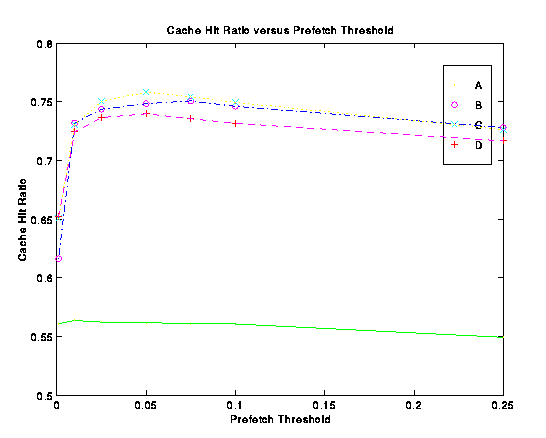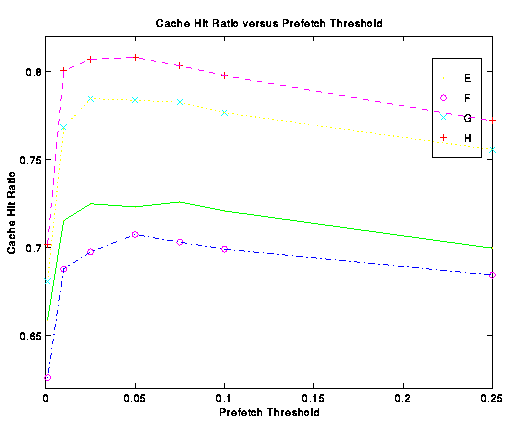



Our first goal was to examine which probability thresholds would result in the best hit ratios. Figure 2 shows how our hit ratio varied as the threshold settings ranged from a probability of 0.001 to 0.25. From this graph we can see that a setting in the region of 0.05 to 0.1 will offer the best performance. From Griffioen and Appleton's work [6] and our earlier work, we expected this setting to be quite low. Even so, it is surprising that such an aggressive prefect threshold produced the best results.
To explain this, we first consider that each trace is comprised of over 10,000 distinct files. Since each of these files can be a child to any node, the tree we build will become very wide. Since the count for each parent is the sum of the counts for its children, such a wide tree would result in parents with much higher counts than their individual children. It follows that the parent count divided by the count of children would be rather low even for children that frequently follow their parent.
For settings greater than 0.025, performance does not change radically with minor variations. However for settings below 0.025 we see a sharp drop in performance as a result of prefetching too many files. Thus we can say that this algorithm is stable for settings of the probability threshold that are greater than 0.025.

2 : Cache hits versus prefetch threshold (cache size 4 megabytes, second
order, threshold settings 0.001, 0.01, 0.025, 0.05, 0.075, 0.1 and 0.25).